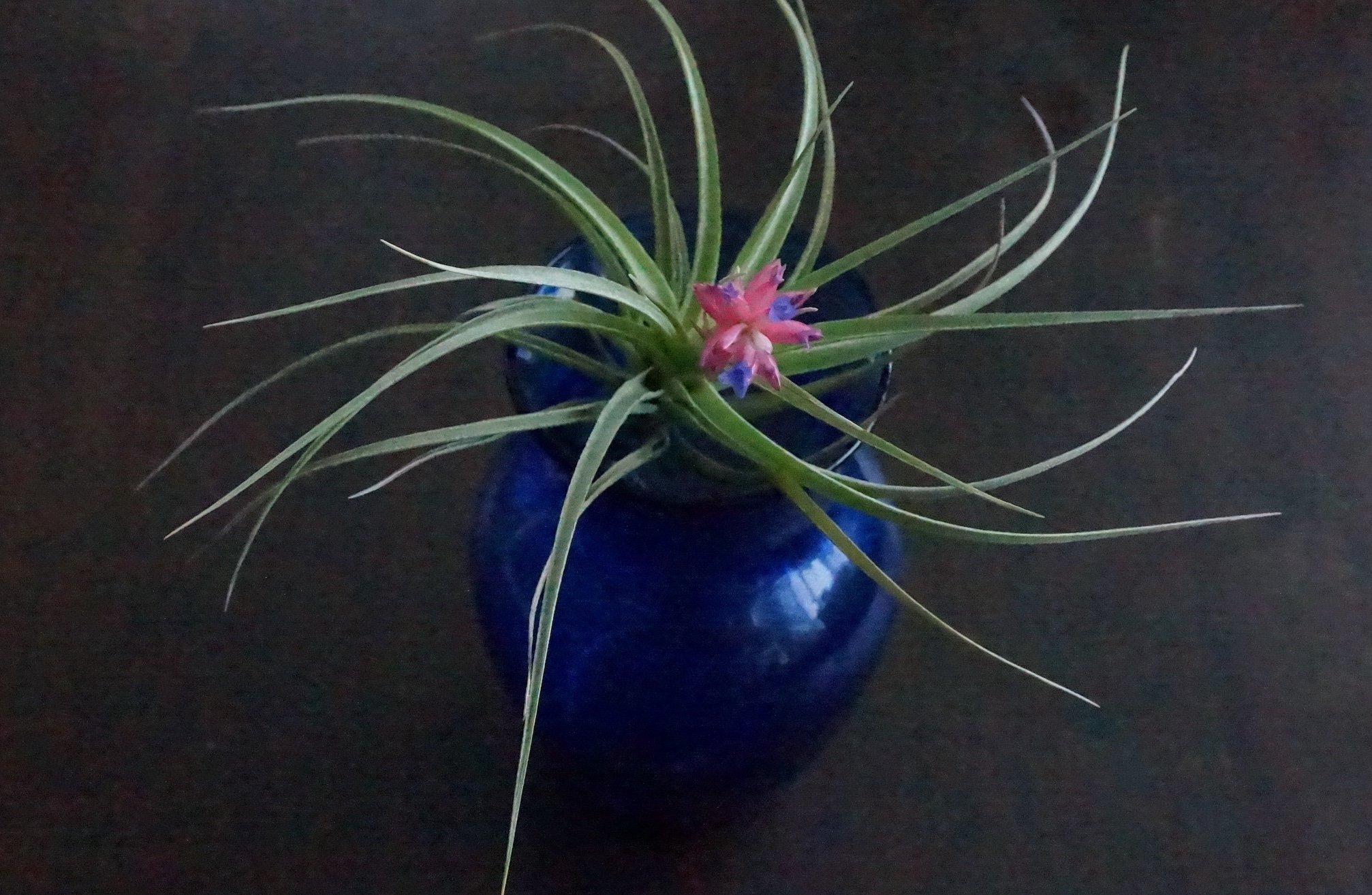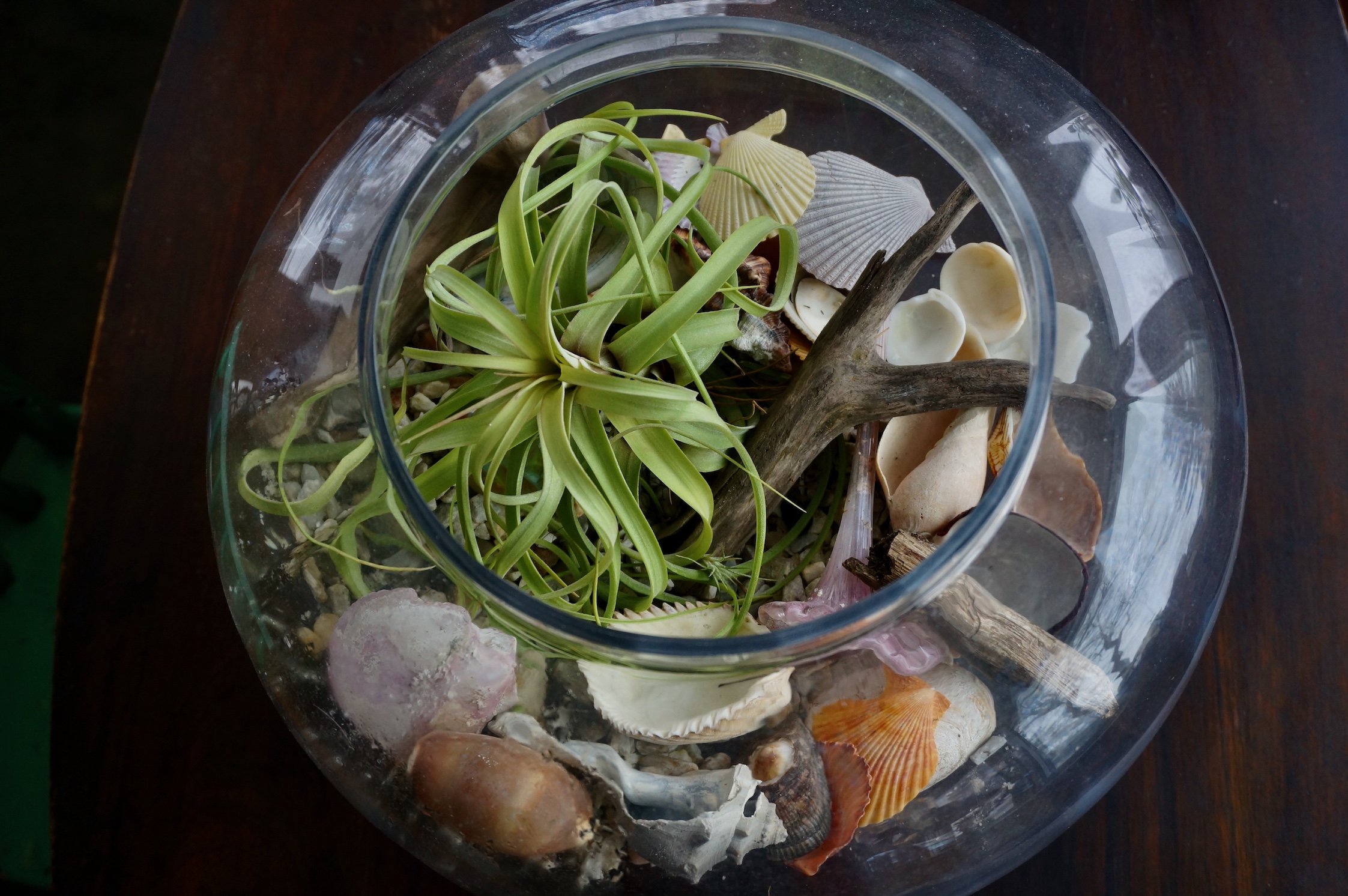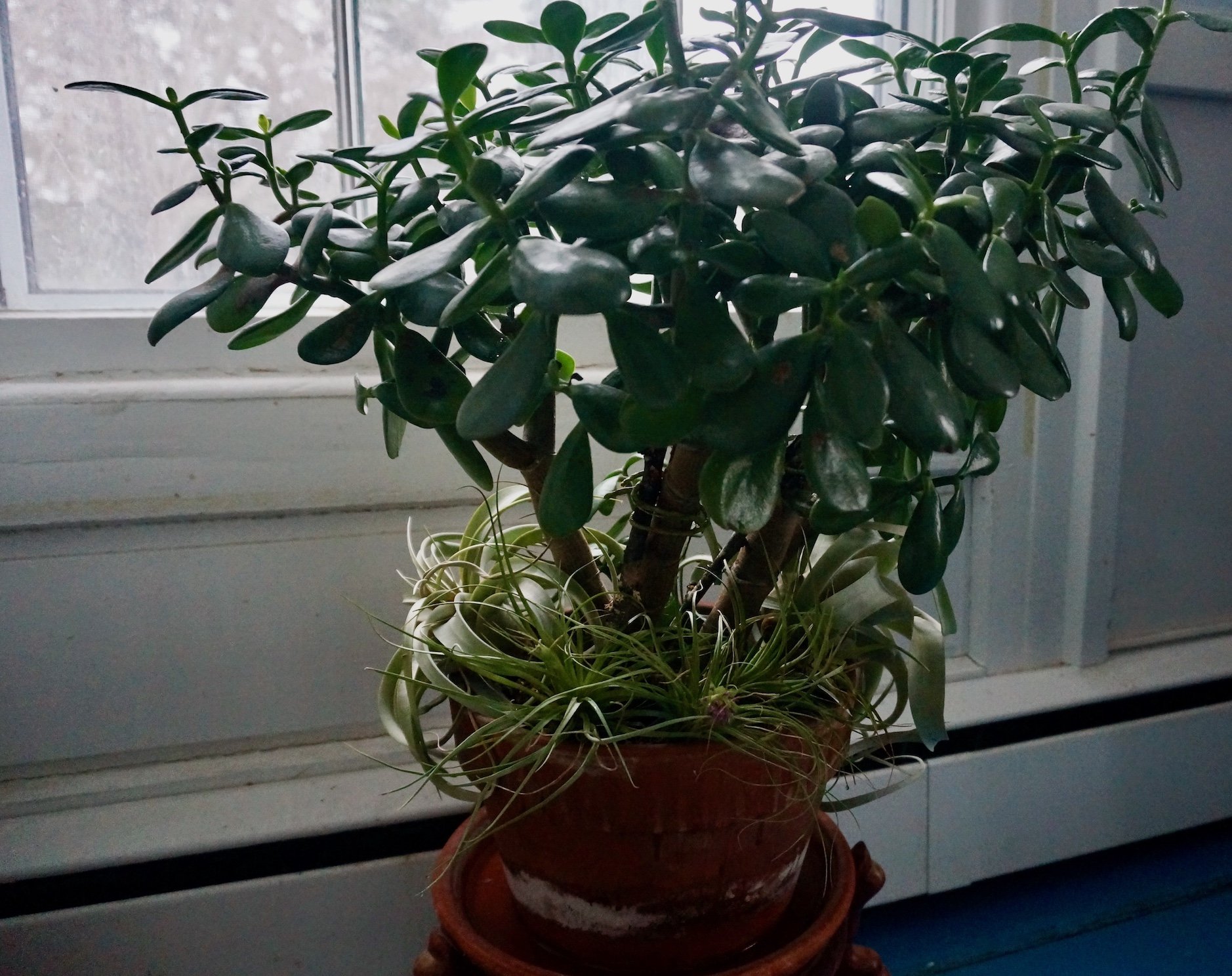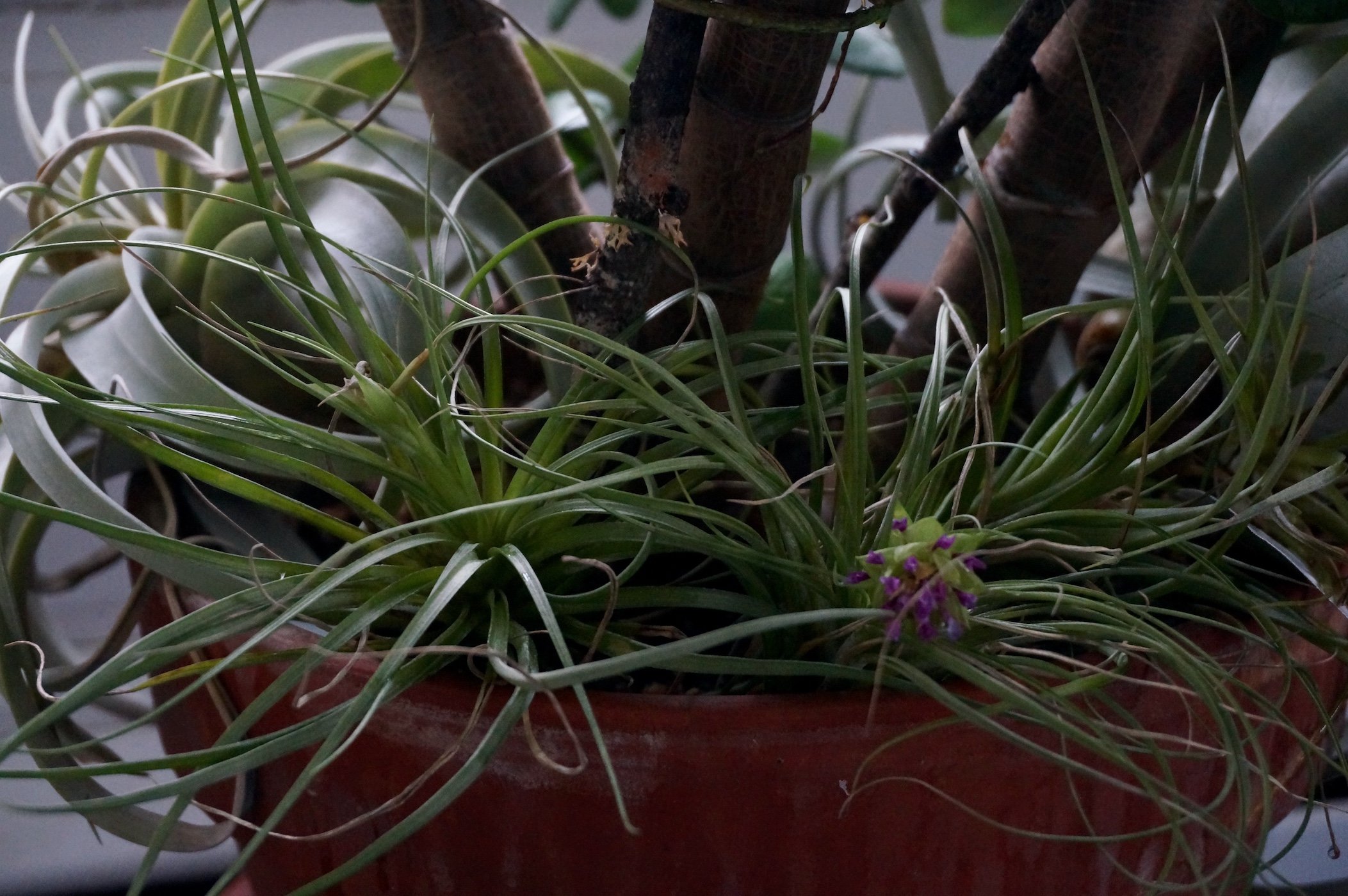Hooked on Tillandsias: An accidental plant adventure
This is a story that began with tidying up and ended in serious plant addiction. Collecting Tillandsias (aka air plants) is kind of like eating potato chips - you can’t stop at one!. Here’s what happened……
By the time fall ended, I was fed up with lugging my houseplant collection inside. I decided it was time to declutter so I tossed the ones that weren’t sparking joy anymore. “I won’t have as many and I’ll take better care of them,” I told myself virtuously. I thought I had reached my houseplant limit.
My tidying up phase shamed me into attacking the mess inside the garden shed. Hidden under a bunch of junk, I unearthed a plexiglass container (below photo) intended for plants, but it leaked. “Too nice to be out here,” I thought. I took it inside, placed it behind the kitchen sink and tossed the sponges and scrubby things into it.
That would have been the end of the story, but while shopping for gifts over Thanksgiving, an enticing display of Tillandsias (air plants) caught my eye. I couldn’t resist buying a few. They were supposed to be gifts.
When I got them home, I decided they should be properly displayed. I couldn’t find anything interesting to put them in, so I took the sponges out of the plexiglass container. I placed a couple of the air plants inside, arranging them with a few things I had laying around - a little piece of driftwood and a few stones.
I fell in love with their personality and presence! The wispy foliage of Tillandsia Argentea (left) looks like it’s celebrating. The more solid foliage of Xerographica (right) dances alongside it. I spent an enjoyable afternoon searching for just the right spot to stick them into the driftwood.
I put it on the windowsill, where it gave me so much pleasure, I couldn’t bear to give it away. In fact, I admit that I had to buy more of them.
I couldn’t resist Tillandsia stricta ‘Green’ because it was in bloom. I’ve never gotten one to flower, but I think it requires a grow light and regular fertilizing. I put it in this blue vase because it was the only thing I had on hand at the time. I probably won’t leave it here because the vase is too confined l and won’t allow for air and dirt particles to nurture it. You can read more about getting them to bloom here. A more open bowl or vase is a common way to display air plants.
Terrariums are another way to display them. I bought this one at a garage sale, unfortunately only one plant I put in survived.
The reason only one survived is because I put the top on the terrarium and condensation proved to be too much moisture for them. For some reason, this one has grown quite a bit in spite of the moister conditions.
I had never seen this before, but what an attractive way to showcase them! My friend Martha planted a variety of Tillandsias around the base of this jade plant.
They aren’t actually planted in the soil, they just sit on top of it. The Jade plant is watered from below so they get some degree of moisture.
Most of my houseplants need at least weekly care, Tillandsias are a piece of cake by comparison. Going on a vacation? No worries, they can get by just fine without you. If you’ve never tried them, here’s a bit of information.
About Tillandsias (aka Air Plants): Tillandsias are part of the Bromeliad species, found in the jungles of Central, South America and Mexico and the southern United States. They are a variety of Epiphytes and do not need soil to grow. However, they are not parasitic and need a host as a method of support.
Care: They’re easy as long as you don’t let them dry out. A few years ago, I was given one placed on tiny pebbles in a plexiglass globe. It died rather quickly, probably due to a combination of drying out and me overwatering to compensate. I’ve read all kinds of things about their care, misting every few days and soaking. I can never remember to do all of that regularly! To me, the beauty of these little gems is that they don’t need much. A weekly soak in tepid water keeps them looking good. Locate them away from direct sun - too much heat and light will dry them out. They need a certain amount of sunlight, either natural or inflourescent light.
Display: Because you don’t need to put them in soil, they can be displayed in many ways - globes, terrariums, bowls and even vases. Moss and small gravel are often used in the bottoms which act as further support.
.For more information about plants and culture check out this site. Fair warning, they have a mind blowing plant list and sell online.
Honestly, I can’t think of an easier, more entertaining type of houseplant. You don’t even need to pace yourself. You’ll never get to your houseplant limit with Tillandsias- they’re small, easy to move around, need very little care and provide endless entertainment. Something we all need while these frigid winter days keep us inside.







